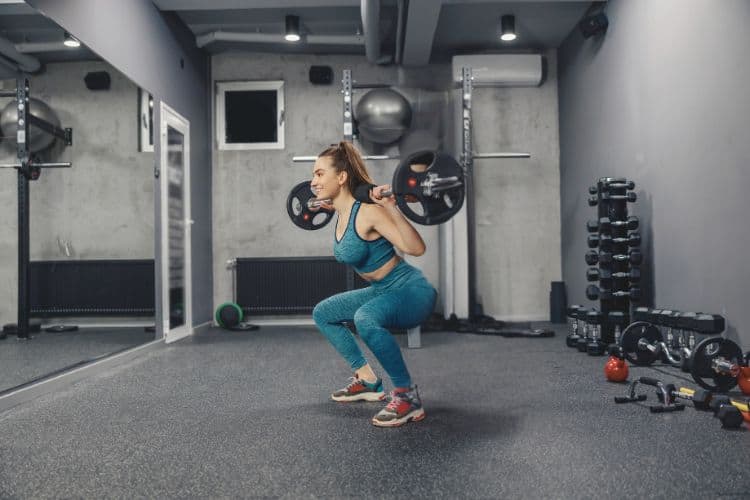Sign up for workout ideas, training advice, reviews of the latest gear and more.






Stretching exercises are an essential component of a balanced fitness routine, offering numerous benefits for women of all ages. Incorporating a variety of stretches into your daily life can lead to improved flexibility, reduced muscle tension, increased blood flow, and an enhanced sense of well-being. In this comprehensive guide, we delve into the world of stretching, providing you with practical advice and effective exercises to elevate your health and vitality.
1. Enhancing Flexibility: Stretching regularly helps in improving your flexibility, which is crucial for performing everyday activities with ease. From picking up your child to reaching for a top shelf, flexibility ensures smoother and pain-free movements.
2. Reducing Muscle Tension and Stress: Women often carry stress in their muscles, especially in the neck, shoulders, and back. Stretching helps in releasing this tension, promoting relaxation and a sense of calm.
3. Promoting Better Posture: A good stretching routine can correct muscle imbalances and promote better posture, which is particularly important for women who spend long hours sitting at a desk or carrying heavy bags.
4. Alleviating Menstrual Discomfort: Certain stretches can help in relieving the discomfort associated with menstrual cramps, providing a natural and holistic remedy.
5. Boosting Circulation: Stretching increases blood flow to the muscles, which can help in speeding up recovery after exercise and reducing muscle soreness.
1. Neck Stretch:
3. Triceps Stretch:
4. Chest Stretch: Stretching Exercises
6. Seated Forward Bend (for Hamstring Flexibility):
7. Butterfly Stretch (for Inner Thighs):
9. Calf Stretch:
10. Hip Flexor Stretch:
1. Consistency is Key: Incorporate stretching into your daily routine, even if it’s just for a few minutes. Consistency leads to improved flexibility over time.
2. Focus on Your Breath: Deep, steady breathing helps in relaxing your body and increasing the effectiveness of your stretches.
3. Don’t Bounce: Perform stretches in a smooth, controlled manner. Bouncing can lead to injury.
4. Listen to Your Body: Stretching should never be painful. If you experience pain, back off and consult with a healthcare professional if necessary.
5. Warm Up Before Stretching: Engage in a light warm-up like walking or jogging in place to increase your body temperature and prepare your muscles for stretching.
6. Make it Enjoyable: Listen to music or practice mindfulness to make your stretching routine a pleasurable experience.
1. Enhancing Joint Range of Motion: Regular stretching exercises helps in maintaining and increasing the range of motion in your joints, which plays a crucial role in preventing injuries. When your muscles are flexible and your joints are able to move through their full range of motion, you are less likely to experience strains or sprains.
2. Preparing the Body for Physical Activity: A dynamic stretching routine serves as an excellent warm-up, preparing your muscles and joints for the physical demands of exercise or daily activities. By increasing blood flow and loosening up your muscles, you help to reduce the risk of injury.
3. Correcting Muscle Imbalances: Many women experience muscle imbalances due to prolonged periods of sitting or repetitive movements. Stretching helps in addressing these imbalances, ensuring that no particular muscle group is overworked or underworked, thus reducing the risk of injury.
1. At the Office: For women who work desk jobs, integrating stretching into your office routine is paramount. Simple stretches like neck rolls, shoulder shrugs, and wrist flexor stretches can help in alleviating tension and preventing the onset of repetitive strain injuries.
2. During Pregnancy: Pregnancy brings about numerous changes in a woman’s body, including added stress and strain on the muscles and joints. Gentle stretching exercises, tailored to the needs of pregnant women, can aid in managing discomfort and preparing the body for childbirth.
3. Postpartum and Beyond: After childbirth, stretching can aid in recovery, helping to restore muscle tone and flexibility. Additionally, as women age, maintaining flexibility through stretching becomes even more important to ensure mobility and reduce the risk of falls.
1. Mindfulness and Relaxation: Stretching provides a unique opportunity to practice mindfulness, as you focus on your breath and the sensations in your body. This meditative aspect of stretching promotes mental relaxation and stress reduction.
2. Enhancing Body Awareness: Regular stretching exercises enhances your body awareness, helping you to become more attuned to the needs of your body. This heightened awareness can lead to better posture, more graceful movements, and a reduced risk of injury.
1. Identify Your Needs: Take note of any areas of your body that are particularly tight or prone to discomfort. Tailor your stretching routine to address these areas, ensuring a balanced approach that covers all major muscle groups.
2. Set Realistic Goals: Set achievable flexibility goals, and remember that progress may be gradual. Celebrate your improvements, no matter how small, and stay motivated to continue your practice.
3. Seek Professional Guidance if Needed: If you have existing health conditions or injuries, or if you’re unsure about how to perform certain stretches, don’t hesitate to seek guidance from a physical therapist or certified fitness instructor.
Embarking on a journey to improve your flexibility through stretching exercises is a decision that can lead to numerous health benefits, enhanced well-being, and an improved quality of life. Remember, flexibility is a component of fitness just like strength and endurance, and it deserves a dedicated place in your fitness routine.
With patience, consistency, and the right approach, stretching can become a rewarding and transformative practice for women at any stage of life. So, embrace the journey, stay committed to your practice, and watch as your body and mind reap the countless rewards of stretching.
Stay up to date on the latest women’s health, fitness and lifestyle trends and tips.